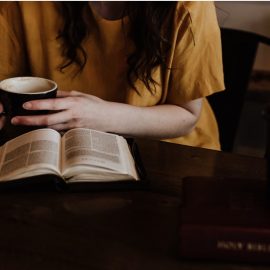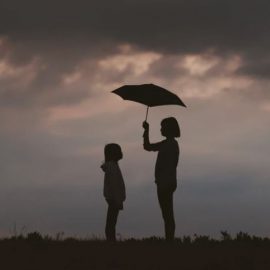

This article gives you a glimpse of what you can learn with Shortform. Shortform has the world’s best guides to 1000+ nonfiction books, plus other resources to help you accelerate your learning.
Want to learn faster and get smarter? Sign up for a free trial here .
Are you prone to procrastination? Do you want to find out the most effective productivity tips from classics like The 5am Club and Eat That Frog?
From relentless digital distractions to the post-pandemic shift to remote work, it’s harder than ever to make the most of your time. That might be why some of the world’s most successful people—like Elon Musk, Jeff Bezos, and Bill Gates—depend on productivity hacks to get everything done. fBut being productive is about much more than jam-packed schedules and crammed calendars—it’s also about looking after your physical and mental well-being and allowing yourself time to rest and reflect.
We have combed through best-selling productivity classics—including The 5am Club, Eat That Frog, and The 7 Habits of Highly Effective People—to bring you the top productivity tips that will make your time go much further.
Change Your Life With These Productivity Tips
The most effective productivity tips are personal to you, which is why we’ve personalized our productivity tips depending on your individual goals and needs. Whether you’re looking to perfect your morning routine, avoid common productivity-killers, or write the best to-do list—we have you covered.
Optimize Your Daily Routine
One of the best ways you can become more productive is to optimize the things you do every single day. Almost everything you do can be improved using productivity tips and techniques—from starting your day right with an energizing morning routine to ending the day with a restorative shut-down ritual.
The productivity tips below will help you to optimize your daily routine for improved productivity:
1) Rise Early
Many of the world’s most successful people are early risers—Apple CEO Tim Cook wakes up at 3:45am, Elon Musk gets up at 7am, and Warren Buffet rises at 6:45am. And there are statistics to back this up, as 90% of executives are up before 6am, and 50% of self-made millionaires are awake three-hours before the beginning of their workday.
The benefits of rising early are also linked to increased mental well-being, reduced drowsiness, better concentration and a feeling of accomplishment before you even start your workday.
You might not naturally be an early bird, but if you stick to a routine, waking up early can become a habit.
Action Steps
Here are some productivity tips you can use to wake up earlier:
- Establish your intentions before going to sleep: Think positively about the next day before you go to sleep to improve mood and motivation.
- Move your alarm clock across the room: Move your alarm clock as far from your bed as possible, so you have to get up and move when it goes off. Movement requires energy, which helps you wake up.
- Brush your teeth: To keep moving, go to the bathroom sink and splash some water on your face and brush your teeth.
- Drink a full glass of water: After six to eight hours without water overnight, you’ll be dehydrated—dehydration causes fatigue.
- Get dressed in your workout clothes: Get dressed so you’re ready to leave your bedroom and start your morning routine.
- Set a timer for your bedroom lights. You may want to set your lights to come on as your alarm goes off. If you don’t use a timer, be sure to turn on your bedroom lights when you get up.
- Set a timer for a bedroom heater. Consider using a heater in your bedroom, timed to turn on about fifteen minutes before your wake up time. When your room is warm, you’ll be less tempted to stay in bed to avoid the cold.
- Join Robin Sharma’s 5am Club.
| In The 5am Club, Robin Sharma details his method for getting up at 5am each morning. Here is an overview: Step 1: Start with a trigger that jumpstarts your new behavior. To wake at 5 am, this trigger is your alarm clock. Step 2: Begin the ritual of the behavior you want to make a habit. After the alarm goes off, jump out of bed immediately before your brain convinces you to go back to sleep. Step 3: Reward yourself to reinforce your ritual. Each day you get out of bed at the sound of the alarm, give yourself a treat that creates joy. You will begin to associate the ritual with joy. Step 4: Repeat the process every day. Repetition is the key to new habits. |
9) Build a morning routine you’re excited for: Ultimately, if you want to get out of bed with energy and enthusiasm, you should be excited about your morning routine. Our next productivity tip will help you establish the perfect morning routine for you.
Do whatever works for you. The key is to have a simple, step-by-step strategy to get you started every morning.
2) Create a Morning Routine That Works for You
As well as rising early, the most successful people usually have a routine they stick to each morning. The best morning routine is one that puts you in a positive mindset, and motivates you to tackle the day ahead. Use the productivity tips listed below to help you create a morning routine that works for you.
Action Steps
In Tools of Titans, Tim Ferris discusses the morning routines of best-selling authors, successful businessmen, and creatives that might give you some ideas:
- Tony Robbins uses his “priming” technique, which changes his body physiology and mental state. After a cold-water plunge, he follows with rapid breathing exercises or a short walk. After this, he will meditate about what he is grateful for. Then, he spends the last part of his morning meditation imagining the three things he’ll make happen that day. He visualizes the successful outcome and viscerally feels the emotions to motivate him. Watch this YouTube video for a detailed explanation of his priming routine.
- Best-selling author Tim Ferris has five morning rituals he completes each day: Making his bed, meditating, making his “titanium tea”, and writing in his five minute journal.
- LinkedIn founder Reid Hoffman finds the morning is when his mind is the freshest, and he spends 60 minutes working on the problem he set for himself the day before.
- Navy SEAL and author Jocko Willink wakes up by 4:45 am. While he was a warfighter, he felt this gave him a psychological advantage over his enemy—while his enemy was still sleeping, Jocko would be readying himself for their encounter.
| In The 5am Club, Robin Sharma argues that the time between 5 am and 6 am is called the “Victory Hour” because of how much you can accomplish within the first hour you’re awake. Here is his 20/20/20 formula and the productivity tips he uses to prepare himself for the day ahead: Exercise from 5 am to 5:20 am: After you get out of bed, perform vigorous physical activity. Go for a run, do jumping jacks, or follow along to an exercise video. The activity is not as important as the level of activity. When you exercise to the point of sweating, you trigger beneficial chemical processes in your brain. Reflect from 5:20 am to 5:40 am: You stimulate your internal spirit when you sit quietly for periods of reflection. During this period, you might sit with your thoughts, journal, or meditate—better yet, do all three. Grow from 5:40 am to 6 am: Read books about icons in your industry, listen to podcasts that increase your knowledge and skills about your craft, watch videos about innovation, or consume self-help materials to deepen your personal awareness. |
3) Make the Most of Your Commute
You likely work out of the house, which means you must commute every morning and evening five days a week. Whether that commute is 20 minutes or two hours, how you spend that time affects your productivity.
Action Steps
These productivity tips will help you make the most of your commute time, which would otherwise be wasted:
- Try not to listen to the news or radio if you’re driving into work. This could fill your mind with negativity before you even start your day.
- Similarly, if you use public transport, things like playing games or sleeping will drain your energy.
- Instead, try to educate yourself on your commute. Author of The 5am Club Robin Sharma suggests listening to audiobooks or meaningful podcasts that enrich your knowledge about life or your specific field.
- Listen to programs about new topics you may know little about. You never know where inspiration is going to strike, but if you don’t remain curious and put forth the effort to continue learning, you guarantee it never will.
- You could also think about your day ahead and what goals you’d like to achieve.
- If using public transport, you could also take the time to meditate, which will get you in a clear headspace ready for your workday.
4) Do the Most Difficult Thing First (Eat That Frog!)
If you’re able to do important things quickly, you can surpass someone with great plans who fails to follow through. Mark Twain had a metaphor for getting hard things done: if you have to eat a live frog, do it right away, so that everything after that is easier by comparison.
Your most important task—the one you’re most inclined to put off—is the frog.
Action Steps
Here are the key productivity tips you need to know about frog-eating or accomplishing challenging tasks:
- Completing your most important task contributes the most to your success.
- If you have two important tasks, or two frogs to eat, eat the worst one first—that is, start with the hardest task.
- Discipline yourself to start on the most important thing immediately and persevere to the end. Treat it as a personal challenge.
- If you have to do something hard, or eat a live frog, it doesn’t help to dwell on it; just do it. Studies have shown that the most successful people are action-oriented—they jump right into big jobs and persevere until they’re done. In contrast, in many companies, there’s way more talk than action, which is why these companies aren’t as successful as they could be.
5) Make Technology Work For You
Technology can often be a distraction, but you can actually use it to help manage your time. There are plenty of apps and features on your devices that can help you deal with distractions and improve organization.
Action Steps
The following productivity tips will help you make the most of technology, rather than letting it control you:
- Close all computer windows, websites, and programs you aren’t using for the task. Turn off phone alerts and notifications.
- Rather than making yourself available to everyone 24/7, you can adjust your phone settings to limit your calls and texts to emergencies or certain people only.
- Similarly, use your email program’s features to sort and prioritize emails.
- Use an online calendar to block out time for your important tasks the same way you would block appointments and meetings.
- You can also use digital productivity tools or software to help you manage tasks and delegate them.
- Social media can be a big distraction or time waster, but some people use it to generate encouragement and positive feedback. They share their goals and updates on their progress with friends or like-minded people, who help them stay motivated and less likely to procrastinate.
- Make use of online timers, like this popular online pomodoro timer.
- Use browser extensions to block distracting websites, like social media sites.
6) Reap the Benefits of Happiness
Given the mental and physical benefits of happiness, it should be no surprise that research shows that positivity increases productivity at work. Happy employees are more focused and innovative, suffer from less stress, and call out for fewer sick days.
One study followed 275 employees over 18 months and found that those who were happiest at the beginning received better pay and evaluations by the end of the period, even when controlling for other factors. In another study, researchers found that happier undergraduates earned higher incomes 19 years later than their unhappy classmates, regardless of initial wealth levels.
Action Steps
- Habits like meditation, exercising, making time for socializing, and doing something kind for someone have been shown to increase your happiness levels.
- You can alter your perspective of tedious, daily tasks to increase your engagement and motivation. If you’re dreading a meeting that you perceive as a waste of time, find something you can gain from the experience.
- When you consider spending time with family or doing a crossword puzzle as valuable opportunities to unwind and recharge, you will more readily reap the rewards of those breaks.
7) Prioritize Down Time to Prevent Burnout
Although productivity tips are often focused on organization, planning, goal-setting, and schedules, looking after yourself is also important. Making time for rest, reflection, and socialization helps you to avoid burnout and therefore improves your productivity.
When you have a daunting, stressful project on your plate, you may be inclined to hunker down and isolate yourself from seemingly superfluous social interactions—eating lunch at your desk, working nights and weekends, and canceling social time with friends and family. However, this approach actually hurts your productivity, instead of helping it, because people need social connection for their productivity and personal well-being.
Action Steps
The productivity tips below are all about making time for rest and relaxation in your busy schedule:
- Resist societal pressure to be doing something all the time. you need to have the courage to reject societal expectations and develop a new, healthier attitude towards work. Read our summary of The Gifts of Imperfection to find out how to do this.
- Actively schedule time for rest, hobbies, fun, and socializing. Make sure you see them as valuable commitments, as you would an important work meeting.
- Make time for self-care, like meditation or taking the time for a relaxing bath.
- Work out what really matters to you—this might be family, friends, or personal ambitions. Then, make this a priority in your schedule.
- Some other examples of healthy habits include taking technological vacations two days a week, spending time in nature, and doing things that make you happy, like cooking or dancing. When you return to your creative space, you’ll be relaxed, focused, and ready to produce.
8) Ritualize Your Workday Shutdown
In Deep Work, Cal Newport suggests creating a shutdown ritual to get your mind off work. He says this ritual should help you check your work for anything you forgot and plan your next day’s work. Newport stresses that an important benefit of the end-of-day ritual is that it helps reassure you that things will be fine when you shut down.
(Shortform note: This ritual also sets clear boundaries between work and not-work, which is especially important as more knowledge workers begin to work from home.)
Action Steps
Here are some productivity tips you can use to create your own shutdown ritual:
- Check your emails for any last urgent items.
- Update your to-do list of unresolved items.
- Check that each unresolved item has a completion date.
- Look through your calendar to make sure there aren’t important deadlines you forgot.
- Make a to-do list of tasks for the next day.
- Say, “All done,” or a similar phrase to explicitly mark the end of work.
- You may want to add reflective time into your workday shutdown—research shows that employees who spend 15 minutes at the end of their workday reflecting on what they learned during the day perform about 23% better in their work than those who don’t take time for reflection.)
9) Begin the Night Before
We know that having a morning routine is important, but a good morning starts with a good evening.
You won’t be able to successfully exploit the benefits of your morning routine if you’re exhausted. How you end the night before is just as important as how you start each day. You must get enough quality sleep to support your mental capacity and overall health.
The benefits of sleep are endless. When you’re asleep, the brain cleanses itself with cerebral spinal fluid. Think of it like washing your car. Your neurons are scrubbed clean so they are shiny and new and ready for the hard work ahead when you wake up. Human growth hormone is also released when you sleep, which regulates emotions, improves cognition, and increases energy.
Action Steps
Here are some suggestions and productivity tips for an optimal evening routine from The 5am Club:
- You should be in bed and ready to sleep shortly after 10 pm to be able to wake up recharged at 5 am.
- From 7 pm to 8 pm, eat your last meal of the day and turn off all devices. Studies show that the blue light from technological devices reduces the production of melatonin, nature’s sleeping pill, in the body. Without melatonin, the body is not signaled to sleep, and the sleep you eventually get will be restless.
- From 8 pm to 9 pm, use the quiet environment to engage meaningfully with family, read, meditate, or take a bath. Your goal is to help your body unwind and relax to prepare for sleep.
- From 9 pm to 10 pm, prepare your exercise clothes for the morning, make time for gratitude practice, and get ready for bed.
In Tools of Titans, Tim Ferriss also looks at the evening routines of successful people throughout history. Here are some examples:
- You could follow the advice of Thomas Edison, who said “never go to sleep without a request to your subconscious.” Accordingly, Reid Hoffman gives his mind an overnight task, like a product design conundrum or a business strategy problem. He lets his subconscious mind get to work.
- You could also end the work day with high-quality work—don’t develop a bad habit of producing poor work at the end of the day. Ernest Hemingway ended his writing sessions mid-flow and mid-sentence so he could start with momentum the next day.
- Like his start-of-day journal, Tim Ferriss has an end-of-day journal, where he answers two questions:
- What are 3 amazing things that happened today?
- How could I have made today better?
Organize and Plan
Effective organization and planning will save you a lot of time and will prevent you from missing anything important. Our productivity tips below include how to write the best to-do lists, how to set effective goals (that you will actually stick to!), and how to use the Getting Things Done system to organize your tasks.
10) Write the Best To-Do List
Although planning your day increases your productivity and effectiveness, surprisingly few people do it, perhaps because it seems difficult. But in reality, planning is simple: On a sheet of paper, list everything you have to do.
Always keep a list. Whenever something comes up, add it to the list. When you work from a list, you can increase your productivity by 25%—two hours a day.
Action Steps
Here are our best productivity tips for writing effective to-do lists:
- Each night, make a list for the next day. Include leftovers—unfinished or undone tasks from the day before—and new tasks for the day.
- Create multiple lists, as effective planning requires different timeframes—daily, weekly, monthly—plus a master list and separate project lists. Your master list contains everything you want to do at some point, and these tasks can be put on your monthly, weekly, and daily lists over time.
11) Batch Admin Tasks
Sometimes we waste a lot of time on routine tasks, like answering emails, making phone calls, and other administrative tasks. Not only do these tasks take time to set up, but switching from task to task constantly can take you out of your flow.
In High Output Management, Andrew Grove puts forward his best productivity tips, inspired by manufacturing principles in factories. He argues that we can save time by batching similar tasks together. That way, you save time on setting up and also complete the tasks quicker due to momentum.
For example, it requires some time to get into the right mindset to read reports. Therefore, once you’re in the mindset, read all the reports at once. Better yet, do these tasks at a time when you’re tired or feeling unproductive.
In The 12 Week Year Charli Engelhorn suggests you should schedule a “buffer block” into your work week. This is the time to work on the miscellaneous activities that disrupt your workflow. When you group these activities into one chunk of time, you reduce the frustration of constant interruptions and the time wasted when you perform these tasks at random moments.
12) Set Effective Goals
Setting effective goals is another principle you need to implement if you want to increase your productivity. You need to have a clear idea of what you’re working towards. You also need to make sure that you’re aiming for the right results.
There are two types of goals that you can use to enhance your productivity: stretch goals and SMART goals.
Stretch goals are far-reaching objectives that, at first glance, may not even seem possible. They’re ambitious and audacious, and often require a lot of forethought and effort to achieve.
In contrast, SMART goals are targeted and focused objectives that often represent the smaller steps you’ll need to take to meet your stretch goals. SMART goals must be specific; measurable; achievable; realistic; and timely.
For stretch and SMART goals to be effective, they must be used together. For instance, you may choose to set an ambitious stretch goal and then break it down into actionable steps using SMART goals.
If a stretch goal is used alone, it can become too overwhelming for you to work towards. If SMART goals are used alone, you may fall into the trap of “cognitive closure”—a mental process that makes you focus more on the satisfying feeling of completing your goals, and less on the actual productivity or usefulness of those goals.
Action Steps
The following productivity tips might help you to set effective stretch and SMART goals:
- Make sure you have a stretch goal (or long-term goal) that motivates and inspires you. This kind of goal should be something that you care about a lot.
- Take it step by step: Make a big job doable by breaking into smaller steps and focusing on one step at a time. Imagine your large task is a salami that you’ve cut into thin slices, and you only need to eat one small slice at a time.
- If you struggle with this, try just one small action. No one ever has too little time or energy for one tiny action. Having one successful small action builds momentum to adopting your habit. For example, WordPress founder Matt Mullenweg committed himself to one push-up before bed to get in shape. Not only was this achievable, but it also made it easier for him to do more than one once he had started.
- Do something every day to advance your goal: Put it on your schedule. For example, make a certain number of cold calls or exercise for 45 minutes. Don’t miss a day. Keep pressing forward.
- Set a deadline for achieving it: Set an overall deadline plus sub-deadlines for steps toward your goal. A goal needs definite deadlines with specific responsibilities to be completed—otherwise, you’ll procrastinate and get little done.

Want to fast-track your learning? With Shortform, you’ll gain insights you won't find anywhere else .
Here's what you’ll get when you sign up for Shortform :
- Complicated ideas explained in simple and concise ways
- Smart analysis that connects what you’re reading to other key concepts
- Writing with zero fluff because we know how important your time is






